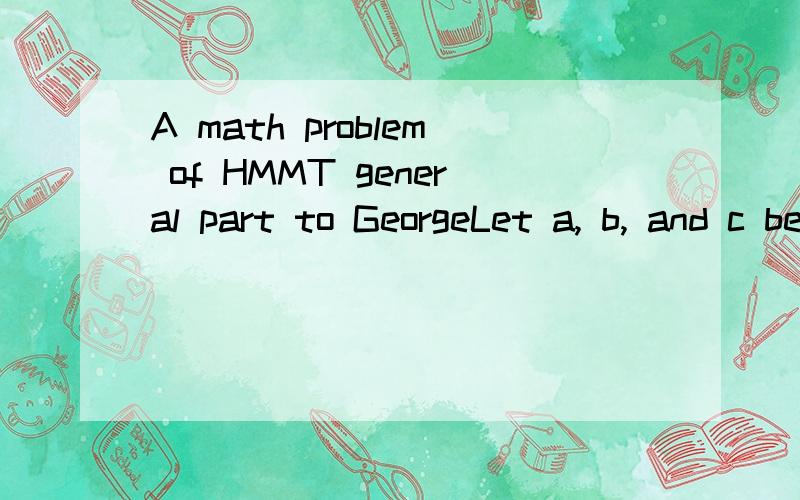A math problem of HMMT general part to GeorgeLet a, b, and c be positive real numbers. Determine the largest total number of real roots that the following three polynomials may have among them: ax^2 + bx + c, bx^2 + cx + a, and cx^2 + ax + b.
来源:学生作业帮助网 编辑:作业帮 时间:2024/04/30 03:17:43

A math problem of HMMT general part to GeorgeLet a, b, and c be positive real numbers. Determine the largest total number of real roots that the following three polynomials may have among them: ax^2 + bx + c, bx^2 + cx + a, and cx^2 + ax + b.
A math problem of HMMT general part to George
Let a, b, and c be positive real numbers. Determine the largest total number of real roots that the following three polynomials may have among them: ax^2 + bx + c, bx^2 + cx + a, and cx^2 + ax + b.
A math problem of HMMT general part to GeorgeLet a, b, and c be positive real numbers. Determine the largest total number of real roots that the following three polynomials may have among them: ax^2 + bx + c, bx^2 + cx + a, and cx^2 + ax + b.
If all the polynomials had real roots,their discriminants would all be nonnegative:a^2>=4bc; b^2>=4ca,and c^2>=4ab.Multiplying these inequalities gives (abc)^2>=64(abc)^2,a contradiction.
Hence one of the quadratics has no real roots.The maximum of 4 real roots is attainable:for example,
the values (a; b; c) = (1; 5; 6) give -2;-3 as roots to x^2 +5x+6 and -1/2,-1/3 as roots to 6x^2+5x+1.